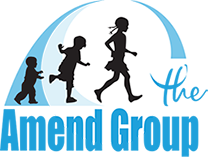- Home
- About
- Providers
- Appointments
- Forms
- About Gifted Children
- Articles by Dr. Amend
- What is Giftedness?
- Gifted Children in the Real World
- Myths and Assumptions
- Asynchronous or Uneven Development
- Characteristics of Gifted Children: A Closer Look
- Misdiagnosis and Dual Diagnoses of Gifted Children and Adults
- Tips for Parents: Worry and the Gifted: How Much is Too Much?
- Individual Assessment of Gifted Children
- What Do You Say to Gifted Children?
- The Amend Group Consulting Services for Parents
- Resources
- Stanford-binet
- What is a Twice-Exceptional (2e) Child?
- Anxiety Facts
- Mostly Do’s (and a few Don’ts) about Gifted Children
- Checklist of Symptoms of Student Burnout
- Signs and Possible Causes of Depression
- Examples of Irrational Beliefs/Thinking Errors
- The Wechsler Intelligence Scale for Children-Fourth Edition
- Links to Other Gifted/Talented Resources
- Frequently Asked Questions
- Articles by Dr. Amend
The book, Misdiagnosis and Dual Diagnoses of Gifted Children and Adults, describes how intellectually advanced children may display many of the same behaviors as children with attention, anxiety, or behavior disorders. While some health care professionals are well versed in recognizing and diagnosing pathologies such as Attention-Deficit/Hyperactivity Disorder (ADHD), few are trained to recognize traits of giftedness. A gifted child's needs arise from his or her strengths—not from weaknesses—and can easily be overlooked because of this. Giftedness and its implications, rather than pathology, may help explain some of the atypical behaviors a gifted child is showing in school or at home.
In addition to ADHD, Asperger's Disorder is also becoming commonly misdiagnosed in gifted youth. Although there can be similarities between a gifted child and a child with Asperger's Disorder, there are very clear differences. Thorough evaluation is necessary to distinguish gifted children's sometimes unusual and sometimes unique social interactions from Asperger's Disorder. In the same way, thorough evaluation is also necessary to distinguish ADHD from behavioral problems and inattention that result from other causes such as anxiety, traumatic experiences like abuse, inappropriate curriculum, or even poor parenting.
A “qualitative impairment” in social interaction is one of the two main characteristics of Asperger's Disorder. Although the Diagnostic and Statistical Manual for Mental Disorders (DSM-IV) gives explicit criteria for this type of social impairment, which does sometimes appear in gifted kids, the highly gifted child's atypical social interactions or unusual modes of commenting and joking may often be misinterpreted as being characteristics of Asperger's Disorder. However, a closer look at the criteria shows differences between Asperger's Disorder and behaviors associated with gifted children. For example, a lack of social or emotional reciprocity is characteristic of Asperger's Disorder while gifted children most often show a tremendous concern for others. They may not always know how to express it appropriately, but the concern is there.
The second major DSM-IV diagnostic component of Asperger's Disorder includes restricted interests characterized by an “encompassing preoccupation with one or more...interest(s) that is abnormal either in intensity or focus.” Professionals knowledgeable about Asperger's Disorder describe an intense fascination with a special interest that can come and go, but which will dominate the child's free time and conversation. Children with Asperger's Disorder may also show an uneven profile of abilities with remarkable long-term memory, exceptional concentration when engaged in their special interest, and an original method of problem solving. In contrast, they may also show motor clumsiness, and a lack of motivation and attention for activities that would engage age-peers. Social withdrawal, teasing by peers, and difficulties relating to others in an age-appropriate manner are other markers for Asperger's Disorder.
All of the above characteristics may be seen in gifted children and can easily be mistaken for Asperger's Disorder by someone not familiar with the asynchronous development and special needs of gifted youth. The unusual behaviors of many gifted children do strike those who are not familiar with gifted characteristics as a “qualitative impairment” in social interactions. Although the gifted child's interactions may technically show a “qualitative impairment,” it is certainly of a different nature and likely has different causes (e.g., thoughts or worries by a gifted child about interacting).
Someone knowledgeable about giftedness can see these differences more readily than those who are not familiar. Frequently, when gifted youth are given the opportunity to interact with true “intellectual peers” in a particular area, their interactions are not only unimpaired, but also are often typical. In a child with Asperger's Disorder, one is not likely to see reciprocal interaction or discussion about a topic even if both children have an interest in the same topic. This is in marked contrast to gifted youngsters who will engage in extremely intense and also reciprocal conversations if both of them share the interest, like dinosaurs, Pokemon, or Harry Potter.
Differential diagnosing is an essential part of the work of health professionals, and it is easy to see how misdiagnoses can be made. If professionals are unaware how characteristics of gifted children may appear similar to clinical syndromes, differentiation of diagnosis and treatment cannot occur, and many gifted children will continue to be mislabeled and wrongly stigmatized. In these cases, proper intervention cannot be implemented. For example, instruction for a bright but inattentive and disinterested student who is not being challenged in the classroom is very different from treatment or classroom approaches needed for an inattentive child with ADHD. Likewise, children with Asperger's Disorder often require much more intensive treatment and different classroom management, while a gifted child may benefit from interventions as simple as the opportunity to interact with appropriate peers.
